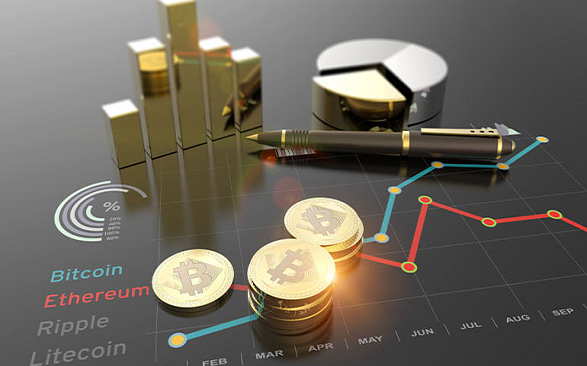By Victor Solomon and Jane Umerah
In the evolving world of decentralized finance (DeFi), Uniswap and PancakeSwap stand out as two of the most popular decentralized exchanges (DEXs). Each platform has carved its niche, attracting users with its unique offerings and ecosystem.
However, despite their similarities, Uniswap and PancakeSwap operate on different blockchains, cater to diverse user needs, and have distinct operational models.
This analysis aims to compare Uniswap and PancakeSwap, focusing on their core features.
1. Blockchain Foundation
Uniswap operates on the Ethereum blockchain, the pioneer of smart contract platforms. Ethereum’s extensive network effect, robust security, and large developer community give Uniswap a solid foundation. However, this comes with a trade-off—Ethereum’s high gas fees and network congestion during peak times can make transactions costly and slow.
Uniswap Exchange (Mobile Interface)
Read also: What is Ethereum?
PancakeSwap, on the other hand, is built on the Binance Smart Chain (BSC). BSC offers faster transaction times and significantly lower fees, making PancakeSwap a more cost-effective option for users. This efficiency is one of PancakeSwap’s key selling points, particularly for those who want to avoid the high costs associated with Ethereum.
2. Operational Mechanics and Protocols
Both Uniswap and PancakeSwap use an Automated Market Maker (AMM) model. AMM model allows users to trade directly against liquidity pools rather than a traditional order book. However, their approaches differ in execution.
Uniswap: Uniswap’s AMM model is straightforward. Liquidity providers (LPs) deposit an equal value of two tokens into a pool, and traders can swap tokens by interacting with these pools. A 0.3% fee is charged per transaction, which is distributed to the LPs.
Uniswap’s introduction of concentrated liquidity in its V3 upgrade allows LPs to allocate liquidity within specific price ranges, improving capital efficiency. This feature is unique to Uniswap, enabling LPs to maximize returns with more precise liquidity management.
PancakeSwap: Similarly, PancakeSwap uses liquidity pools on BSC, but it distinguishes itself with additional features like staking, yield farming, and a lottery system.
PancakeSwap charges a 0.25% fee per transaction—lower than Uniswap’s—with 0.17% going to LPs, and the remainder supporting the platform’s treasury and lottery.
Also, PancakeSwap’s diverse offerings make it more than just a DEX; it’s a broader DeFi ecosystem with gamified elements that appeal to a wider audience.
Pancakeswap Exchange (Mobile Interface)
3. Governance and Tokenomics
Both Uniswap and PancakeSwap have governance tokens that empower their communities to influence the platform’s direction.
Uniswap (UNI): UNI token holders can vote on protocol upgrades, changes to fee structures, and other governance proposals.
The fixed supply of UNI tokens means there is no inflationary pressure, which is appealing to long-term holders.
Also, the governance model of Uniswap is entirely decentralized, reflecting the ethos of the broader Ethereum ecosystem.
PancakeSwap (CAKE): CAKE also allows for governance, but with a twist. PancakeSwap employs an inflationary model, where new CAKE tokens are continually minted to reward users in yield farming and staking. This inflation is partially offset by deflationary mechanisms, such as token burns and buybacks, to help maintain CAKE’s value.
The gamified aspects of PancakeSwap, including its lottery system and staking rewards, add layers of utility to the CAKE token, encouraging active participation in the ecosystem.
Read also: What is Yield Farming and How does a Crypto Investor Benefit?
4. User Experience and Interface
When it comes to user experience, both Uniswap and PancakeSwap have their strengths.
Uniswap: Uniswap’s interface is designed with simplicity in mind. It’s clean, minimalistic, and functional, making it easy for users to navigate and execute trades.
However, the platform’s reliance on Ethereum can sometimes lead to a suboptimal experience due to high gas fees and slower transaction times, particularly for small traders.
PancakeSwap: PancakeSwap offers a more visually engaging interface with vibrant graphics and additional features like games and lotteries.
The platform’s lower fees and faster transaction times on BSC make it more accessible, especially for new users and those with smaller amounts of capital.
Moreover, the added features and gamified elements make PancakeSwap feel more interactive, although this could be seen as either a pro or a con, depending on user preferences.
5. Security Considerations
Security is a critical factor for any DeFi platform, given the risk of smart contract vulnerabilities and potential exploits.
Uniswap: Uniswap has undergone numerous audits by reputable security firms, reinforcing its trustworthiness within the community. Despite this, the platform has experienced security breaches, including a significant incident in 2023 where over $25 million was lost.
These breaches highlight the ongoing risks in DeFi and the importance of continuous security enhancements.
PancakeSwap: PancakeSwap has also been audited, and while it has faced challenges, specific security breaches have not been as prominent as those of Uniswap.
However, the platform is not immune to the risks inherent in DeFi, and users must remain vigilant. Regular audits and community scrutiny are crucial to maintaining the platform’s integrity.
Analyzing Data from DeFiLlama
| Metric | PancakeSwap | Uniswap | Comparison |
| Daily Active Users | 72.6K | 10.7K | PancakeSwap has ~6.8 times more daily active users than Uniswap. |
| Daily Transactions | 194.03K | 34.29K | PancakeSwap has ~5.7 times more daily transactions than Uniswap. |
| Total Value Locked (TVL) | $1.09 Billion | $3.49 Billion | Uniswap’s TVL is over three times higher than PancakeSwap’s. |
| Market Capitalization | $0.28 Billion | $2.98 Billion | Uniswap’s market cap is over 10 times larger than PancakeSwap’s. |
| 24-Hour Trading Volume | $0.27 Billion | $0.67 Billion | Uniswap’s 24-hour trading volume is about 2.5 times higher than PancakeSwap’s. |
| Total Volume | $510.95 Billion | $1.73 Trillion | Uniswap’s total trading volume is more than three times that of PancakeSwap. |
| Transaction Fees | $0.61 Million | $1.5 Million | Uniswap generates more than twice the transaction fees of PancakeSwap. |
Summary of Data
PancakeSwap leads in user engagement metrics, such as daily active users and daily transactions.
Uniswap dominates in financial metrics, including TVL, market capitalization, 24-hour volume, total volume, and transaction fees.
These differences illustrate PancakeSwap’s stronger user base in terms of activity but Uniswap’s larger financial presence and influence in the DeFi space.
Read also: Crypto Lending and Borrowing: How they work, benefits and risks
6. Future Outlook and Development
The future of both Uniswap and PancakeSwap will depend on their ability to innovate, adapt, and maintain strong community support.
Uniswap: Uniswap’s focus on Ethereum and its integration with layer-two scaling solutions like Optimism shows a clear path towards improving scalability and reducing fees. The platform’s extensive developer community and integration with the broader Ethereum ecosystem position it well for long-term growth, especially as Ethereum continues to evolve.
PancakeSwap: PancakeSwap’s future may involve further expansion beyond BSC, potentially integrating with other blockchains to enhance its market reach. Its strategic ties to Binance and the appeal of its lower-cost transactions give PancakeSwap a strong competitive edge, particularly among users seeking affordable DeFi services. Continued innovation in gamified features and cross-chain compatibility could help PancakeSwap maintain its momentum.
Conclusion
Uniswap and PancakeSwap are both leading DEXs, but they cater to different audiences and offer distinct value propositions. Uniswap, with its Ethereum base, appeals to users who prioritize decentralization and are willing to pay higher fees for a robust, battle-tested platform. PancakeSwap, leveraging the Binance Smart Chain, attracts those looking for a cost-effective, user-friendly, and feature-rich environment.
For users and investors, the choice between Uniswap and PancakeSwap will largely depend on their specific needs—whether it’s the broader Ethereum ecosystem and its deep liquidity or the affordability and diverse offerings of the Binance Smart Chain. Both platforms have proven their worth in the DeFi space, and as the sector continues to grow, their roles and influence are likely to evolve, reflecting the dynamic nature of decentralized finance.
Read also: What is Decentralized Finance (DeFi) and How To Benefit from Its Ecosystem?
Discover more from Crypto Asset Buyer
Subscribe to get the latest posts sent to your email.




